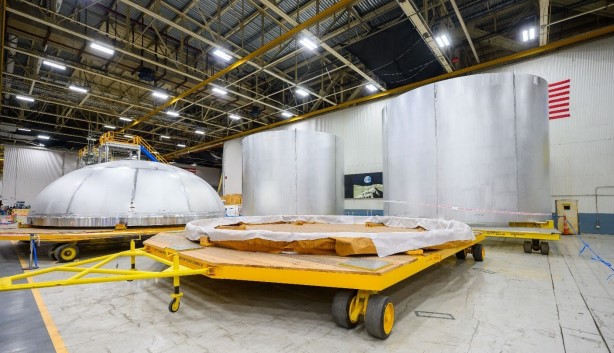In the latest in a string of blows to Boeing, an internal NASA watchdog has pointed out some glaring faults in the SLS Block 1B, the launch vehicle that is supposed to carry four astronauts to the Gateway space station in 2028 for the Artemis IV mission.
NASA’s Office of Inspector General (OIG) detailed significant issues with the next version of Boeing’s Block 1B version of SLS in a report published on 8 August. Boeing’s quality management system at the Michoud Assembly Facility in New Orleans, where the launch vehicle is being developed, has fallen short of the usual quality controls NASA requires from its contractors.
Boeing was issued with 71 Level I and II Corrective Action Requests (CARs), and a draft Level III CAR by Defense Contract Management Agency (DCMA) officials following inspections of the rocket’s core and upper stage manufacturing efforts between September 2021 and September 2023. The severity of the CARs ranges from Level I, the least serious, to Level IV, the worst. The number of CARs assigned to Boeing is considered high for the stage of vehicle development. Holding nothing back, the OIG concluded that it “reflects a recurring and degraded state of product quality control”.
The body went on to pronounce Boeing’s process to address deficiencies as “ineffective” and called the contractor “nonresponsive in taking corrective actions when the same quality control issues reoccur”. The main reasons for the poor-quality control, according to the OIG report, were delays, cost overruns and Boeing’s Michoud workforce lacking “sufficient aerospace production experience, training, and instruction”.
The scathing remarks are the latest in the sorry history of the rocket’s development. The SLS Block 1B has already cost US$3 billion, and this is projected to rise to US$5.7 billion by the time it is ready to launch in 2028 (if it isn’t delayed further). Although costly, the upgrades being applied are important for the Artemis IV mission, which will be the second lunar landing and the first to use the Lunar Gateway.
The rocket’s cargo capacity is key and the development of the SLS’s new upper stage, the Exploration Upper Stage (EUS), is aimed at increasing this by 40%. Unfortunately for Boeing, and NASA, the cost of developing the EUS has ballooned from US$962 million to US$2.8 billion.

The OIG observed an improperly welded core Stage 3 liquid oxygen tank dome during its visit to the Michoud Assembly Facility in April 2023. Courtesy: Manufacturing Technical Solutions, Inc.





